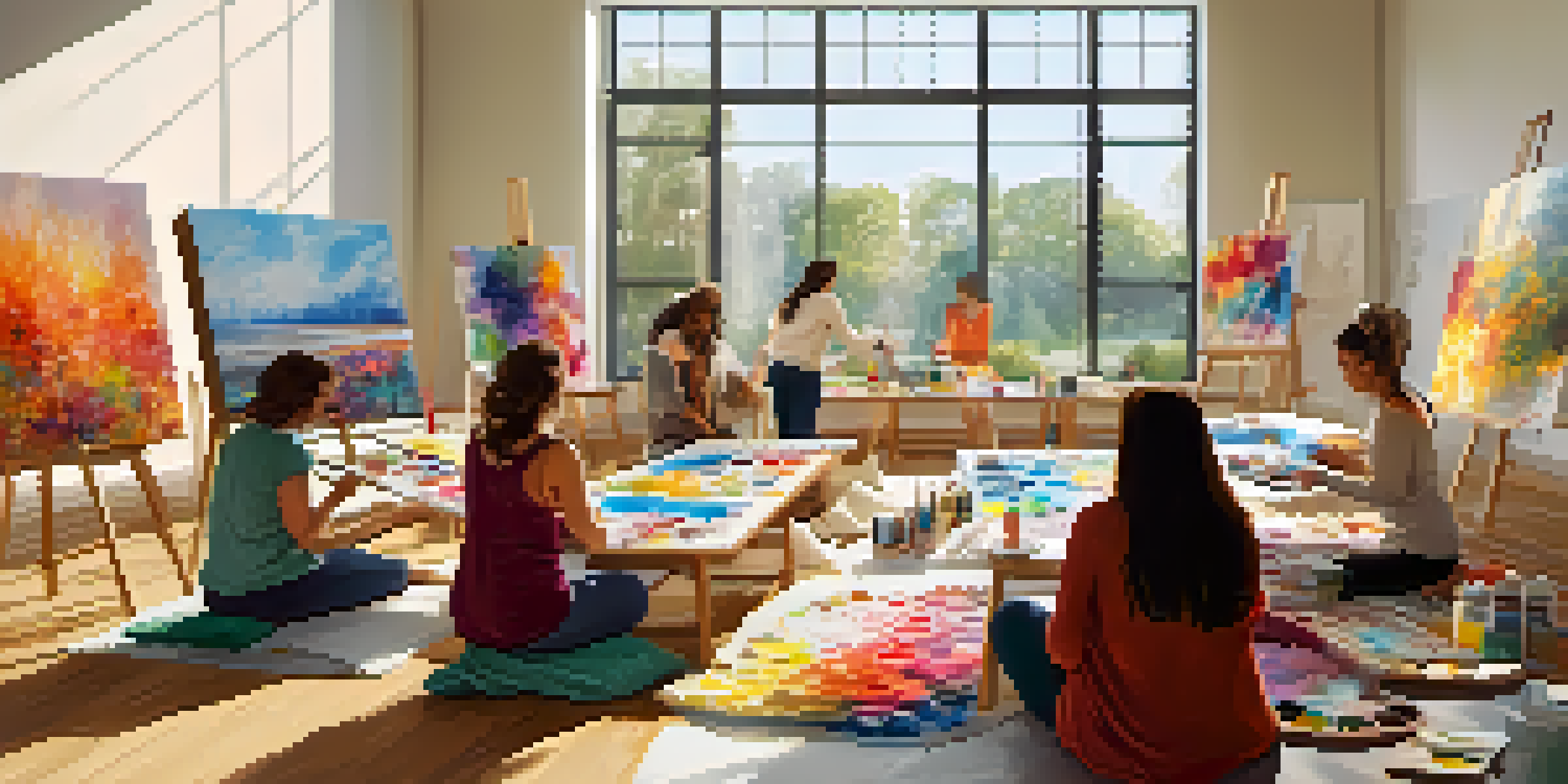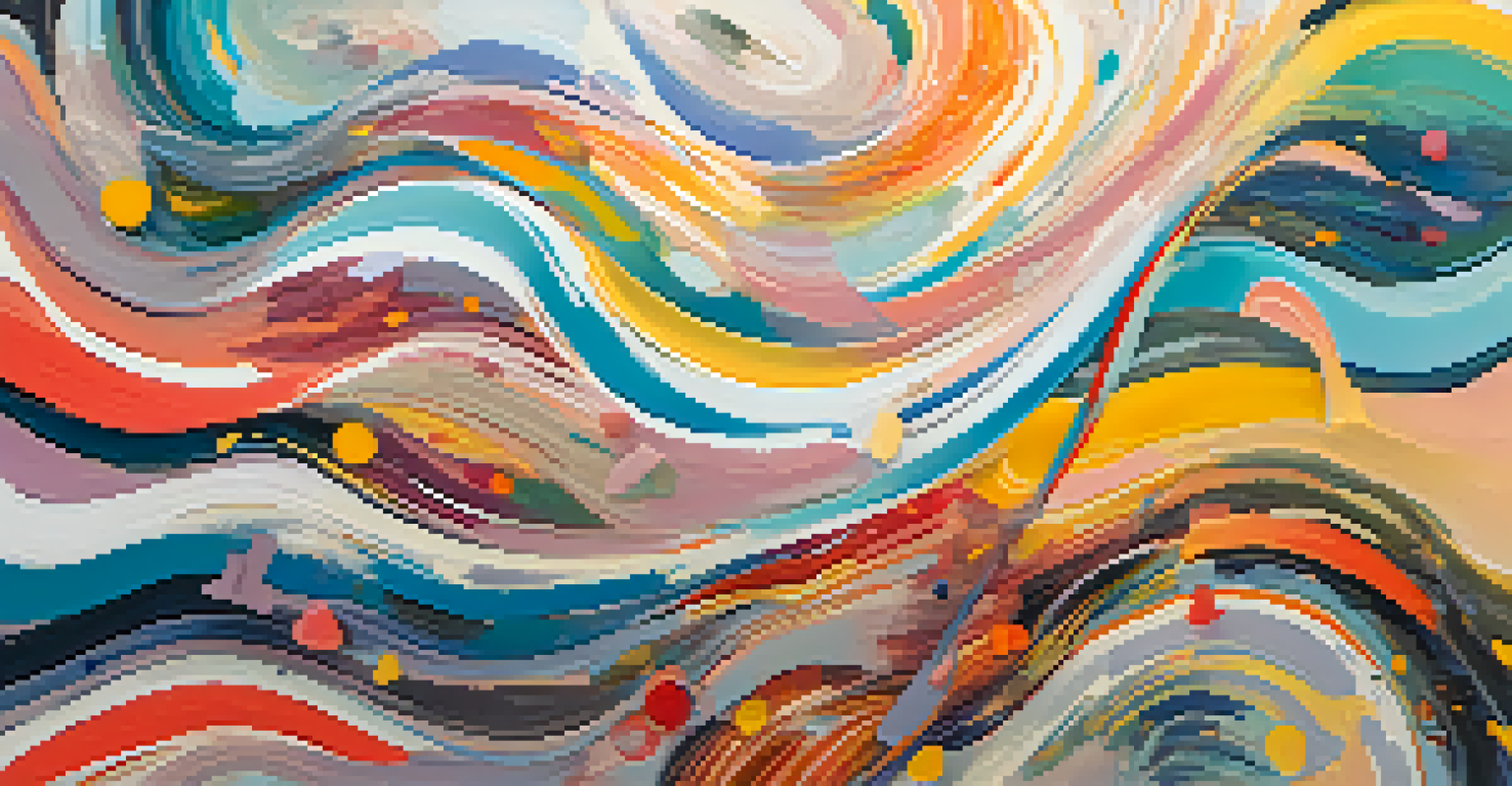The Use of Art in Substance Abuse Recovery Programs

Understanding Substance Abuse Recovery Challenges
Substance abuse recovery is often a complex journey filled with emotional and psychological challenges. Individuals face not only the physical withdrawal symptoms but also deep-rooted feelings of shame, guilt, and anxiety. This multifaceted struggle can make it difficult for individuals to open up and engage in traditional therapeutic methods.
Art is the most beautiful of all lies.
Many recovery programs focus on talk therapy and support groups, which are vital for healing. However, for some, these methods may not feel accessible or sufficient. This is where alternative approaches, such as art therapy, can play a transformative role, providing new avenues for expression and understanding.
Art as a medium can help bridge the gap between the individual’s internal struggles and the external world. By engaging in creative activities, individuals can explore their feelings, confront their past, and ultimately find a voice in their recovery journey.
The Therapeutic Benefits of Art in Recovery
Engaging in art allows individuals to express emotions that may be difficult to articulate in words. Whether through painting, drawing, or sculpture, the process of creating can evoke feelings of joy, sadness, or even anger, allowing for a healthy outlet. This emotional expression is crucial in the recovery process, as it can lead to greater self-awareness and healing.

Art also serves as a distraction from cravings and triggers, providing a mental break from the daily struggles of recovery. When individuals immerse themselves in creative activities, they can experience a sense of flow and focus, which can be incredibly therapeutic. This engagement can foster a sense of accomplishment and empowerment, which is often lost during substance abuse.
Art Therapy Enhances Recovery
Integrating art therapy into recovery programs provides individuals with new avenues for emotional expression and healing.
Moreover, art can facilitate connection and community among participants in recovery programs. Sharing and discussing art allows individuals to bond over their experiences, fostering a support network that is vital for long-term recovery.
Different Forms of Art Therapy in Recovery
Art therapy encompasses a variety of creative expressions, each offering unique benefits for recovery. Visual arts, such as painting or drawing, allow individuals to externalize their emotions and thoughts, making them more tangible and manageable. This process can help individuals gain perspective on their experiences and feelings.
Creativity takes courage.
Music therapy is another powerful form of art therapy that can evoke deep emotional responses. Whether creating music, singing, or simply listening, music can be a profound catalyst for healing. It often resonates with our personal narratives, allowing individuals to process their feelings in a unique way.
Drama therapy and dance movement therapy also offer innovative approaches, using movement and role-playing to explore emotions and relationships. These methods can help individuals express themselves physically, which can be particularly beneficial for those who struggle with verbal communication.
Case Studies: Success Stories in Art Therapy
Many recovery programs have documented success stories where art therapy made a significant impact. For instance, a community center that incorporated art classes into its substance abuse program saw participants become more engaged and open during therapy sessions. The art served as a bridge to deeper conversations about their struggles and triumphs.
Another success story involves a participant who struggled with expressing her trauma related to substance abuse. Through painting, she was able to depict her journey and share it with her group, leading to powerful discussions and connections. This kind of vulnerability can be transformative and healing.
Creative Expression Fosters Community
Engaging in art allows participants to bond over shared experiences, creating a supportive network essential for long-term recovery.
These case studies highlight the potential of art therapy as a complementary approach in recovery programs. The stories serve as a reminder that everyone’s journey is unique, and finding the right tools for healing can make all the difference.
Incorporating Art into Traditional Recovery Programs
Many traditional recovery programs are now recognizing the value of integrating art into their curriculums. By offering art workshops or sessions alongside conventional treatment options, these programs can provide a more holistic approach to recovery. This integration can cater to diverse learning styles and emotional needs.
Practitioners in recovery settings can collaborate with art therapists to create structured programs that allow participants to explore their creativity. These sessions can be tailored to address specific themes, such as coping with loss or rebuilding self-esteem, enhancing the overall therapeutic experience.
The incorporation of art into recovery programs not only enriches the therapeutic process but also fosters a sense of community and support among participants. Sharing art and experiences can break down barriers and promote healing on multiple levels.
Challenges and Considerations in Art Therapy
While art therapy holds immense potential, it is essential to acknowledge the challenges it may present. Some individuals might feel intimidated by the idea of creating art, fearing judgment or feeling inadequate. This apprehension can hinder participation, so it’s crucial to create a safe, non-judgmental environment.
Additionally, not all art therapists are trained equally, which can impact the effectiveness of the therapy. Ensuring that practitioners are adequately trained in both art and therapeutic techniques is vital for successful outcomes. This competency can help individuals feel more comfortable and supported throughout their creative journey.
Challenges in Art Therapy
While art therapy is beneficial, it faces challenges such as participant apprehension and the need for properly trained therapists.
Finally, measuring the effectiveness of art therapy can be complex, as success is often subjective. It’s important for recovery programs to continuously evaluate their methods and adapt to the needs of the participants, ensuring that art remains a beneficial and integral part of the healing process.
The Future of Art in Substance Abuse Recovery
As awareness of art therapy continues to grow, so does its potential in substance abuse recovery. More programs are beginning to see the value in incorporating creative expression as a vital component of holistic healing. This shift could lead to more innovative approaches to recovery and a broader understanding of mental health.
The future may also bring advancements in technology, such as digital art platforms, which can expand access to those who may not have traditional art supplies. Online workshops and virtual art therapy sessions can connect individuals from various backgrounds, promoting inclusivity and accessibility.

Ultimately, the integration of art into recovery programs highlights the importance of addressing the emotional and psychological aspects of healing. By embracing creativity, we can pave the way for more effective and compassionate recovery processes.